
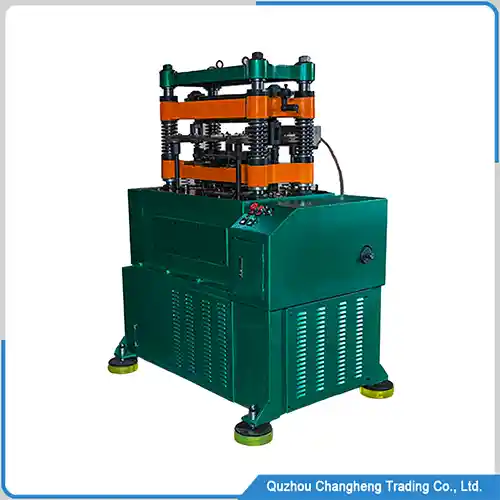

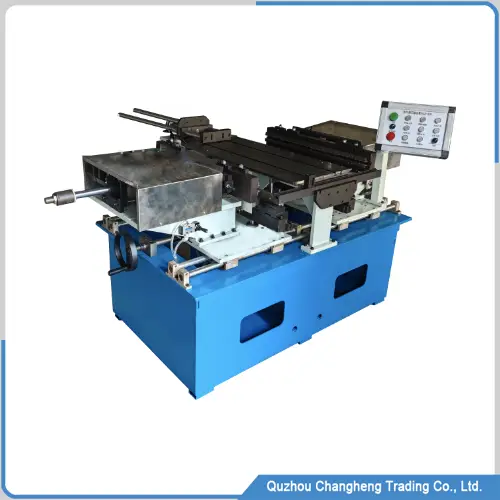
Mold Overview
In applications such as automotive radiator head plates, the precision and durability of stamping die are crucial for production efficiency and the performance of the final product.
Therefore, professional mold manufacturers not only need to have high-level design and manufacturing capabilities, but also need to have a deep understanding of material science, forming processes, and automotive industry standards.
Through this approach, we can provide customers with high-quality customized solutions that meet specific production needs and performance indicators. Especially in the field of stamping die for the head plate of aluminum radiators
We can make molds of different sizes and shapes according to the specific requirements of our customers. This usually involves material selection, mold design, manufacturing process, as well as final testing and quality control.
In the production of automotive radiator head plates, the stamping mold must be able to accurately form complex geometric shapes while maintaining the required accuracy and tolerances.
Our scope of service
- Radiator head plate mold
- intercooler head plate mold
- Condenser head plate mold
- Forming mould
- Drawing dies
- Punching die
- Cutting die
- Drawing dies for laminated evaporator
Stamping die data
| No. | ITEM | DATA |
| 1 | Mold Usage | Stamping |
| 2 | Production materials | aluminum galvanized sheet |
| 3 | Mold application | radiator condenser heater |
| 4 | Mold material | EN C45 Cr12MoV |
| 5 | Quenching hardness | 58-62 |
| 6 | Mold color | Custom |
| 7 | Delivery time | 45 days |
| 8 | Minimum order quantity | 1 nos |
Stamping mold manufacturing
When manufacturing the stamping die for the aluminum radiator head plate, the following factors need to be considered:
1, Material selection:
Select suitable mold steel or other alloy materials based on the application and performance requirements of the workpiece.
2, Mold design:
Using CAD/CAM software for 3D modeling, optimizing mold structure and process flow.
3, Manufacturing process:
High-precision machining equipment such as CNC machine tools, electrical discharge machining (EDM), and high-speed milling centers are used to manufacture molds.
4, Surface treatment:
Hardening, coating, or other special treatments are applied to the surface of the stamping die to extend its service life.
5, Testing and Quality Control:
Conduct trial molding and validation to ensure that the mold can meet expectations
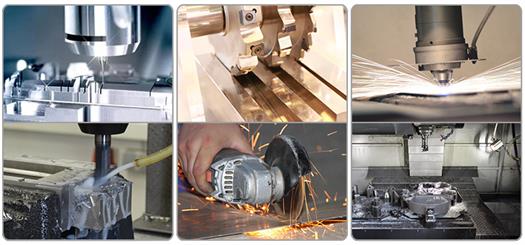
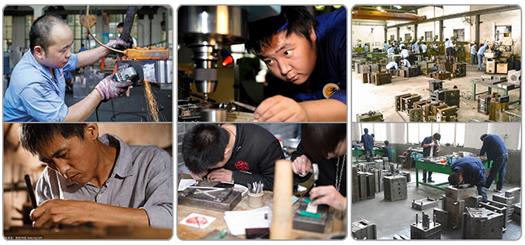


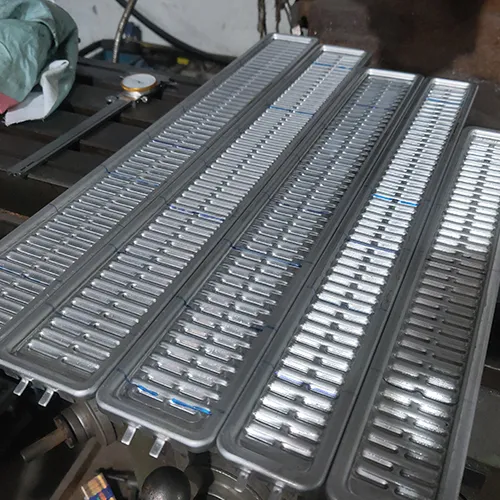
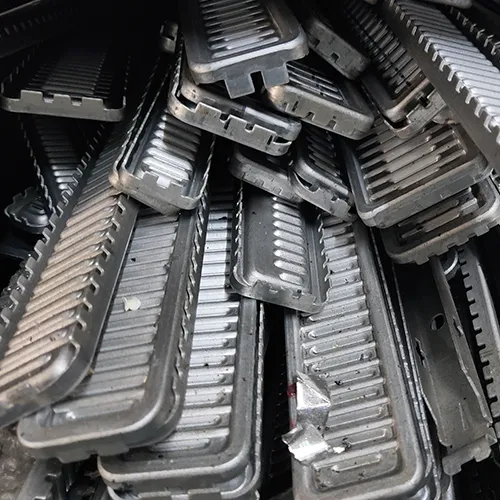








 WECHAT
WECHAT